Our Speakers
- Sarit AGASTI
Dr. Sarit Agasti is is a faculty fellow at JNCASR Banglore. His research focuses on organic and supramolecular chemistry, chemical biology, fluorescence imaging and super-resolution microscopy, sensing, diagnostics and drug delivery. - Sri Rama Koti AINAVARAPU
Dr. Sri Rama Koti Ainavarapu is an associate professor in chemistry at TIFR Mumbai. His research works include Mechanochemistry (chemistry upon mechanical activation of bonds) and kinetic characterization of chemical and biochemical reactions. - Nirmalya BAG
Dr. Nirmalya Bag is an assistant professor in the department of chemistry at IIT Kharagpur. Research in our laboratory aims at understanding biological processes at the molecular level through the lens of physical chemistry. They primarily investigate the processes underlying cell’s response to environmental cues/signals (e.g., chemotaxis in response to external chemical stimuli). This is done by a set of plasma membrane bound proteins (such as transmembrane receptors, sensors, and ion channels) that is poised to respond to the environmental changes and initiate an array of biochemical reactions eventually leading to intracellular signal transduction. A key biophysical characteristic of the plasma membrane is its capacity to undergo liquid-liquid phase separation through collectives of lipid-lipid, protein-lipid, and protein-protein interactions. - Sayan BAGCHI
Dr. Sayan Bagchi is an associate professor & principal scientist at CSIR-National Chemical Laboratory Pune. In his research group, they use time averaged and time resolved spectroscopic techniques to obtain a quantitative understanding of structures, interactions, and dynamics in biological/chemical reactions and interrogate their roles and interdependencies towards function. They also use theoretical methods like molecular dynamics (MD) simulations and quantum chemical calculations to obtain a molecular level understanding of the biological/chemical processes. - Debanjan BHOWMIK
Dr. Debanjan Bhowmik is a scientist at RGCB Thiruvananthapuram. The ability to resolve how different nanoparticle (NP)-properties affects cellular-interactions is critical for understanding nanoconstructs’ design-activity-relationships, which can open important avenues in anti-cancer and immunotherapy research. To achieve such mechanistic understanding, he aims to test different nanoconstruct designs by visualizing the entire process of NP-cell interaction at single particle level through a semi-continuous and concerted probing. Alongside probing overall impact of a variety of nanoconstructs in cell-cultures, He also aims to focus on several different important events in nanoconstruct-cell interaction, starting from probing of NP-cell membrane binding at initial time periods to tracking of NPs inside the live-cells. - Krishnananda CHATTOPADHYAY
Dr. Krishnananda Chattopadhyay is a Senior Principal Scientist & HOD Structural Biology & Bioinformatics at IICB Kolkata. His research areas include Fluorescence correlation spectroscopy, protein folding, intrinsically disordered proteins, stability and aggregation of proteins. - Arindam CHOWDHURY
Dr. Arindam Chowdhury is a faculty at IIT Bombay. His current research focus is to understand spatiotemporal heterogeneity in soft-matter matrices (such as polymer thin-films) and semiconductor nanomaterials (such as quantum-dots/quantum-wells) using single-molecule translational/rotational dynamics and single-emitter luminescence spectroscopy. He is also involved in development of new methodologies for sensing applications in biological media using polarization-/spectrally-resolved microscopy. - Jyotishman DASGUPTA
Dr. Jyotishman is a faculty at the department of chemical science in TIFR Mumbai. His research field includes role of coherent motion in photoactive system using combination of steady-state electronic spectroscopy along with pump-probe electronic and time-resolved Raman spectroscopy. - Anindya DATTA
Prof. Anindya Datta is currently the professor of chemistry at IIT Bombay. His research focuses on the photophysics of novel fluorophores, molecular assemblies and materials using cutting edge spectroscopic techniques including Femtosecond Transient absorption, Time Correlated Single Photon Counting and Femtosecond Optical Gating. - Cecile FRADIN
Dr. Cecile Fradin is an assistant professor in department of physics and astronomy at McMaster university, Hamilton. Her research focusses on studying the dynamics of single molecules inside biological systems using optical tools. They are using several different experimental techniques, among which fluorescence correlation spectroscopy and single particle tracking, to study single molecule dynamics. - Kanchan GARAI
Dr. Kanchan Garai is a faculty at TIFR Hyderabad. His research group use an array of biophysical techniques such as fluorescence spectroscopy, FRET, anisotropy, circular dichroism, atomic force microscopy (AFM) and the calorimetric techniques to characterize the structural changes and the self-assembly or disassembly of the amyloid species. In addition, they are building single molecule sensitive techniques such as Fluorescence Correlation Spectroscopy (FCS) and single molecule FRET (smFRET) for quantitative characterization of the early events of protein aggregation. - Jino GEORGE
Dr. Jino George is currently the assistant professor at IISER Mohali. His research is focused on molecular strong coupling.They are aiming to understand the chemical and physical properties of hybrid light-matter states, which are otherwise called as polaritonic states. - Claudiu GRADINARU
Dr. Claudiu Gradinaru is a professor in chemistry at the University of Toronto. Gradinaru biophysics research laboratory uses advanced laser and detection technology to capture conformational dynamics and molecular interactions at the single-molecule level. Single-molecule techniques are widely applied in life sciences and nanotechnology due to their unique ability to go beyond the intrinsic disorder and complexity of biological systems and provide new insights for how they work and for therapeutic intervention. Ultrasensitive microscopes in our lab, designed and built specifically for single-molecule fluorescence imaging and spectroscopy, provide a wide range of photon-level experimental capabilities, making the lab unique in Canada. - Shubhasis HALDAR
Dr. Shubhasis Haldar is an assistant professor in Biology at Ashoka university. His research work focused on interface of physics, chemistry, and biology-aiming to understand complex biological phenomenon, starting from force sensor proteins to chaperone biology.Furthermore, they have developing novel single molecule methodology to understand the unanswered questions in chaperone biology. - Gilad HARAN
Prof. Gilad Haran is a faculty at Weizmann Institute of Science. Their research involves the application of cutting-edge spectroscopic methods on the single-molecule level, including fluorescence and Raman scattering, to study molecular dynamics. They are also interested in a diverse set of problems, from protein folding to surface plasmon excitations at metal surfaces. - Mahesh HARIHARAN
Dr. Mahesh Hariharan is a faculty in department of chemistry, IISER Thiruvananthapuram. His research group focuses on various aspects of Physical Organic Chemistry and Biophysical Chemistry to understand the effect of light on organic small molecules and biomolecules. Synthetic efforts to modulate the rate of charge recombination that is monitored using ultrafast spectroscopic techniques is one of the primary interests in his group at IISER Thiruvananthapuram. - Hagen HOFMANN
Dr. Hagen Hofmann is a faculty in department of chemistry and structural biology, at Weizmann institute of science. His research focusses on broad set of single-molecule fluorescence tools to understand the dynamics of proteins and protein networks on timescales from nanoseconds to hours. In addition, we use live-cell imaging, in vivo single-molecule FRET, and single particle tracking to monitor proteins in live cells. - Mahendran K. R.
Dr. Mahendran K. R. is a scientist at RGCB Thiruvananthapuram. His laboratory focusses on the molecular transport across porins of grampositive bacteria (mycolata) specifically through hetero-oligomeric pores from Nocardia farcinica with integration of different disciplines. - Hema Chandra KOTAMARTHI
Dr. Hema Chandra Kotamarthi is a faculty Indian Institute of Technology Madras. His research interest lies in understanding the physicochemical properties of Biomolecules, in particular proteins and enzymes.His group using single-molecule force spectroscopy, biochemical techniques in understanding processes of protein folding/unfolding and degradation. - Oleg KRICHEVSKY
Dr. Oleg Krichevsky is a faculty in department of physics at Ben-Gurion University of the Negev. His research highlights on Internal dynamics of biological polymers: DNA molecules, actin filaments. There are of interests are analyzing the interactions and physical properties of biological molecules usingadvanced optical and molecular biology techniques. - G. V. Pavan KUMAR
Dr. G. V. Pavan Kumar is a faculty at IISER Pune. He is broadly interested in research questions that are at the interface of nanophotonics and soft-matter physics.
Specifically, to address questions such as:
1. how do optical/optothermal forces behave at micro- and nano-scales?
2. how do optical/optothermal forces interact with single molecules and soft (nano)matter: colloids, liquid crystals, droplets, bubbles etc.?
3. what can we learn about the structure and dynamics of molecules and soft matter using optical/optothermal forces?
4. what are the technological and biological implications of optical/optothermal force-soft matter interaction? - Manoj KUMBHAKAR
Dr. Manoj Kumbhakar is a faculty in radiation and photochemistry division at BARC. His research interests are to monitor the mechanism as well as kinetics of various chemical reactions from spectroscopic variations, using single molecule and ensemble spectroscopic techniques. - Adithya LAKSHMANNA
Dr. Adithya Lakshmanna is currently an assistant professor at School of Chemistry IISER Thiruvananthapuram. His research focuses on unravelling the intricate structural dynamics associated with excited state electron and proton transfer processes using ultrafast coherent Raman and IR spectroscopic methodologies. - Sudipta MAITI
Prof. Sudipta Maiti, currently the professor and chair at Department of chemical science, TIFR Mumbai. His research group is trying to address various problems of protein aggregation/misfolding and neurotransmitter dynamics using various instrumentation on single molecule level. - Prasun K. MANDAL
Dr. Prasun K. Mandal is currently the Professor in IISER Kolkata. His research includes Single molecule/particle spectroscopy-microscopy.Ultrafast-ultraslow dynamics (femto to milli-second), Live-cell and cell-organelle imaging, Semiconductor quantum dots, Perovskites, Fluorescent protein chromophores, Meta-fluorophores, Flexible crystals. - Saptarshi MUKHERJEE
Dr. Saptarshi Mukherjee is an associate professor in department of chemistry at IISER Bhopal. His research areas include single molecule spectroscopy, confocal and total internal reflection microscopy imaging, ultrafast laser spectroscopy, fluorescence correlation spectroscopy, atomic force microscopy and bio-macromolecules (Proteins and Enzymes, DNA, Lipids, Polymers etc.). - Tushar Kanti MUKHERJEE
Dr. Tushar Kanti Mukherjee is an associate professor in the discipline of chemistry at IIT Indore. His research group focuses on the optoelectronic and photophysical properties of semiconductors and metal nanoparticles. They ultimately aim to address various chemical and biological problems using these nanoparticles as fluorescence probe. - A. V. R. MURTHY
Dr. Murthy is working as an Assistant Professor at the Department of Applied Physics, Defence Institute of Advanced Technology, Pune, India. His broad research areas are Free Space Optical Communication, Optical instrumentation, Bio-photonics, Atomic Force microscopy and spectroscopy of biomimetic systems. - Jayashree NAGESH
Dr. Jayashree Nagesh is a Ramanujan Faculty Fellow at the Solid State and Structural Chemistry Unit at the Indian Institute of Science, Bangalore. Her research group focuses on understanding light-induced vibronic process leading to photovoltaic applications and strategies to combat light-induced aggregation of biomolecules, utilizing first-principle based theories, mixed quantum-classical and quantum-classical and quantum mechanical-molecular mechanics algorithms. - Chandrabhas NARAYANA
Professor Narayana specializes in Raman Spectroscopy. Though a trained condensed matter physicist, Prof. Narayana, developed a keen interest in Biology within a few years at JNCASR. His group is a pioneer in the use of Raman spectroscopy in a) drug-protein interaction, for drug screening applications and b) diagnostic applications. - Shivprasad PATIL
Dr. Shivprasad Patil is an associate professor in department of physics, IISER pune. His research is mainly focusing on quantitative force measurements to study various aspects of molecular mobility, dynamics and mechanical response at single molecule scale with a goal to develop new methods with spatial resolution at molecular scale and time resolution of few tens of microseconds. - Edamana PRASAD
Dr. Edamana Prasad is a professor at the Department of Chemistry, Indian Institute of Technology Madras. He is also working as the Head of Teaching Learning Centre at IIT Madras where a group of faculty members from science and engineering departments, IIT Madras has been actively participating in organizing various activities for improving the teaching-learning process in the higher education sector of the country. His research interests mainly focusses on supramolecular self - assembly and photophysical aspects of small and assembled molecular systems. - Steve PRESSE
Dr. Steve Presse is a faculty in School of Molecular Science at TEMPE Campus, Arizona state university. His lab now uses both theory and experiments to address fundamental questions relevant to molecular science. On the theory side, his group develops, adapts and uses the tools of inference, statistical physics and stochastic processes, broadly defined, to understand living systems from single molecules to whole cells. A special emphasis is placed on interpreting spectroscopy and imaging data. On the experimental side, Presse's group investigates the role of hydrodynamics on bacterial interactions. - Sabyasachi RAKSHIT
Dr. Sabyasachi Rakshit is an associate professor at IISER Mohali. His research interests aim to understand the most well-developed living-sensor, 'hearing' and aspire to establish diagnostic tools to understand the health of human body by listening to ears. They utilize both experimental approaches using Atomic Force Microscope, single-molecule Forster Resonance Energy Transfer (FRET) using TIRF Microscope, Fluorescence Imaging, Live-cell imaging, Time-Resolved Emission Spectroscopy (TRES), Near-Field Scanning Optical Microscopy (NSOM) etc. as well as computational approaches like Molecular Dynamics and Steered Molecular Dynamics. - Elizabeth RHOADES
Dr. Elizabeth Rhoades is a professor in chemistryat the University of Pennsylvania. Research in the Rhoades lab aims to elucidate the principles that link protein conformational change with structure-function relationships, focusing on understanding structural plasticity in intrinsically disordered proteins (IDPs). IDPs do not form stable structures under physiological conditions; for many, function is dependent upon disorder. This is in striking contrast to the structure-function paradigm that dominates our understanding of globular proteins. Given the large fraction of the eukaryotic proteome predicted to be disordered, the scope of the problem and the need for new insights are enormous. - Basudev ROY
Dr. Basudev Roy is an assistant professor in the department of physics at IIT Madras. His research group primarily focusses on optical tweezersbased study of statistical mechanics and biological systems. They are interested in experimental soft matter physics, high resolution imaging and optical tweezers - Hugo SANABRIA
Dr. Hugo Sanabria is an Associate Professor and Principal Investigator of the Single Molecule Biophysics Lab at Clemson University. He is an NSF CAREER and Alexander von Humboldt awardee. Skilled in Mathematical Modeling, Protein Chemistry, Spectroscopy, Fluorescence, and Biophysics. Strong education professional. - Bidyut SARKAR
Dr. Bidyut Sarkar is interested in the investigation of structural dynamics of biomolecules through novel single molecule spectroscopy. - Ben SCHULER
Dr. Ben Schuler is Professor of Molecular Biophysics at the department of Biochemistry in University of Zurich. He investigates the structure, dynamics, folding and misfolding of proteins with a close combination of biochemical and spectroscopic methods, in particular single molecule fluorescence. - Pratik SEN
Prof. Pratik Sen is currently a professor in department of chemistry, IIT Kanpur. His prime research interests are femtosecond and picosecond ultrafast laser spectroscopy, nonlinear laser spectroscopy, protein stability, binary solvent mixtures. - Sobhan SEN
Dr. Sobhan Sen is currently the associate professor at Jawaharlal Nehru University, New Delhi. His research involves molecular dynamic simulations, ultrafast and single molecule spectroscopy and biomolecular dynamics. - Soumik SIDDHANTA
Dr. Soumik Siddhanta is an assistant professor in chemistry at IIT Delhi. He hasresearch experience in Molecular spectroscopy (Raman, SERS, IR), Plasmonics, Material science, Microscopy/Imaging/Bio-analytical techniques, molecular modelling, Computational plasmonics, and Biophysics. - Trevor SMITH
Dr. Trevor Smith is a professor at the University of Melbourne.His research interests are in the broad area of photochemistry/photophysics specialising in ultrafast laser spectroscopy and optical microscopy applied to systems including organic and other photovoltaic materials. - Rajaram SWAMINATHAN
Prof. Rajaram Swaminathan is a working at IIT Guhawati. Biophotonics, Fluorescence Spectroscopy, Protein Charge Transfer Spectra, Protein Aggregation, Intrinsically Disordered Proteins, Influence of Macromolecular Crowding on enzymatic reaction rates & equilibria and Big Data analysis of the Proteomes are his field of interest. - K. George THOMAS
Dr. George Thomas is a professor and J C Bose National Fellow at the School of Chemistry of the Indian Institute of Science Education and Research Thiruvananthapuram. His research includes Plasmonically-powered chemical systems, Photochemistry and Photophysics of semiconductor quantum dots and Chiroptical properties of nanostructures. - Jayant B UDGAONKAR
Prof. Jayant B. Udgaonkar is currently the professor in Biology at IISER Pune. His research areas include Self-organisation and cell morphogenesis, Lipid signalling pathways, Protein folding, Structure and function of molecular machines, Cell motility and bacterial cytoskeleton, Discovery and analysis of membrane-remodelling proteins, Origins and early evolution of life, Chemical Proteomics, Metabolomics/Lipidomics. - Reji VARGHESE
Dr. Reji Varghese is an associate professor in chemistry at IISER Thiruvananthapuram. His research areas include Organic Synthesis, DNA Nanotechnology, Supramolecular Chemistry, Bionanomaterials. - Sachin Dev VERMA
Dr. Sachin Dev Verma is an assistant professor in chemistry at IISER Bhopal. They are working at the interface of Chemistry and Physics. They are trying to develop and utilise optical spectroscopic and microscopic experimental tools, covering a dynamic range from femtoseconds to seconds, to understand exciting dynamic processes in energy nanomaterials and biomacromolecules. - Jerker WIDENGREN
Dr. Jerker Widengren is a faculty in the department of applied physics at KTH royal institute of technology. They focus on ultrasensitive and ultrahigh resolution fluorescence spectroscopy and imaging, where the possibility to detect, identify and characterize biomolecules and biomolecular interactions down to a single molecule level opens exciting perspectives in diagnostics, screening methodologies, and for fundamental dynamic and conformational studies of biomolecules.
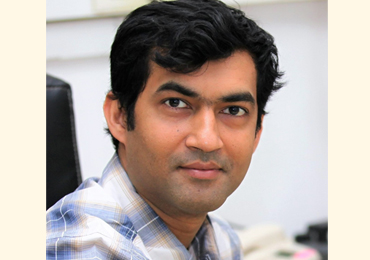
Sarit AGASTI
Dr. Sarit Agasti is is a faculty fellow at JNCASR Banglore. His research focuses on organic and supramolecular chemistry, chemical biology, fluorescence imaging and super-resolution microscopy, sensing, diagnostics and drug delivery.
View Profile
Sri Rama Koti AINAVARAPU
Dr. Sri Rama Koti Ainavarapu is an associate professor in chemistry at TIFR Mumbai. His research works include Mechanochemistry (chemistry upon mechanical activation of bonds) and kinetic characterization of chemical and biochemical reactions.
View Profile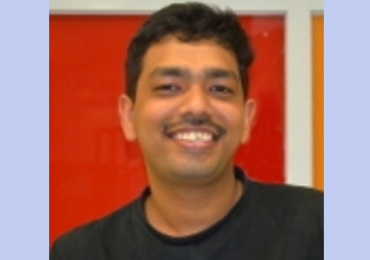
Nirmalya BAG
Dr. Nirmalya Bag is an assistant professor in the department of chemistry at IIT Kharagpur. Research in our laboratory aims at understanding biological processes at the molecular level through the lens of physical chemistry. They primarily investigate the processes underlying cell’s response to environmental cues/signals (e.g., chemotaxis in response to external chemical stimuli). This is done by a set of plasma membrane bound proteins (such as transmembrane receptors, sensors, and ion channels) that is poised to respond to the environmental changes and initiate an array of biochemical reactions eventually leading to intracellular signal transduction. A key biophysical characteristic of the plasma membrane is its capacity to undergo liquid-liquid phase separation through collectives of lipid-lipid, protein-lipid, and protein-protein interactions.
View Profile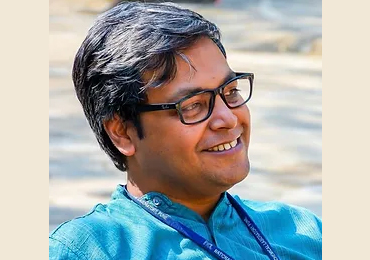
Sayan BAGCHI
Dr. Sayan Bagchi is an associate professor & principal scientist at CSIR-National Chemical Laboratory Pune. In his research group, they use time averaged and time resolved spectroscopic techniques to obtain a quantitative understanding of structures, interactions, and dynamics in biological/chemical reactions and interrogate their roles and interdependencies towards function. They also use theoretical methods like molecular dynamics (MD) simulations and quantum chemical calculations to obtain a molecular level understanding of the biological/chemical processes.
View Profile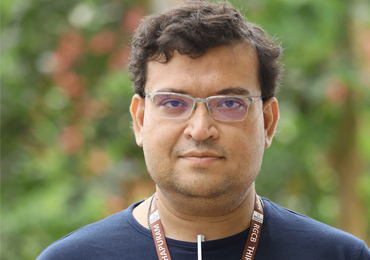
Debanjan BHOWMIK
Dr. Debanjan Bhowmik is a scientist at RGCB Thiruvananthapuram. The ability to resolve how different nanoparticle (NP)-properties affects cellular-interactions is critical for understanding nanoconstructs’ design-activity-relationships, which can open important avenues in anti-cancer and immunotherapy research. To achieve such mechanistic understanding, he aims to test different nanoconstruct designs by visualizing the entire process of NP-cell interaction at single particle level through a semi-continuous and concerted probing. Alongside probing overall impact of a variety of nanoconstructs in cell-cultures, He also aims to focus on several different important events in nanoconstruct-cell interaction, starting from probing of NP-cell membrane binding at initial time periods to tracking of NPs inside the live-cells.
View Profile
Krishnananda CHATTOPADHYAY
Dr. Krishnananda Chattopadhyay is a Senior Principal Scientist & HOD Structural Biology & Bioinformatics at IICB Kolkata. His research areas include Fluorescence correlation spectroscopy, protein folding, intrinsically disordered proteins, stability and aggregation of proteins.
View Profile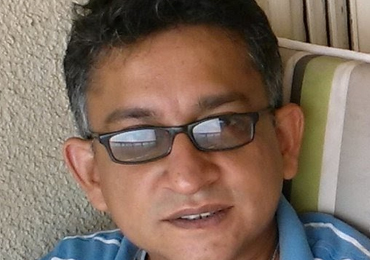
Arindam CHOWDHURY
Dr. Arindam Chowdhury is a faculty at IIT Bombay. His current research focus is to understand spatiotemporal heterogeneity in soft-matter matrices (such as polymer thin-films) and semiconductor nanomaterials (such as quantum-dots/quantum-wells) using single-molecule translational/rotational dynamics and single-emitter luminescence spectroscopy. He is also involved in development of new methodologies for sensing applications in biological media using polarization-/spectrally-resolved microscopy.
View Profile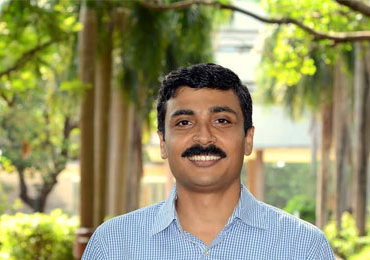
Jyotishman DASGUPTA
Dr. Jyotishman is a faculty at the department of chemical science in TIFR Mumbai. His research field includes role of coherent motion in photoactive system using combination of steady-state electronic spectroscopy along with pump-probe electronic and time-resolved Raman spectroscopy.
View Profile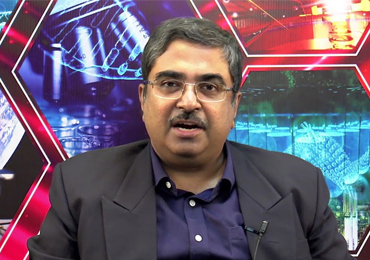
Anindya DATTA
Prof. Anindya Datta is currently the professor of chemistry at IIT Bombay. His research focuses on the photophysics of novel fluorophores, molecular assemblies and materials using cutting edge spectroscopic techniques including Femtosecond Transient absorption, Time Correlated Single Photon Counting and Femtosecond Optical Gating.
View Profile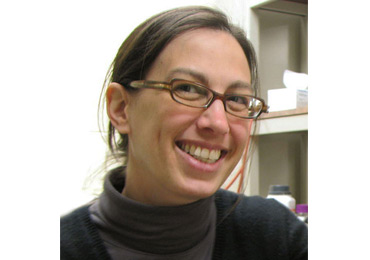
Cecile FRADIN
Dr. Cecile Fradin is an assistant professor in department of physics and astronomy at McMaster university, Hamilton. Her research focusses on studying the dynamics of single molecules inside biological systems using optical tools. They are using several different experimental techniques, among which fluorescence correlation spectroscopy and single particle tracking, to study single molecule dynamics.
View Profile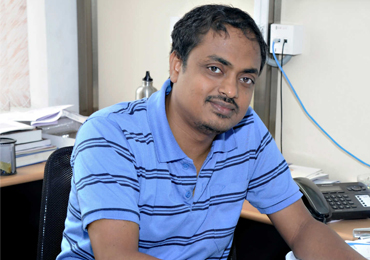
Kanchan GARAI
Dr. Kanchan Garai is a faculty at TIFR Hyderabad. His research group use an array of biophysical techniques such as fluorescence spectroscopy, FRET, anisotropy, circular dichroism, atomic force microscopy (AFM) and the calorimetric techniques to characterize the structural changes and the self-assembly or disassembly of the amyloid species. In addition, they are building single molecule sensitive techniques such as Fluorescence Correlation Spectroscopy (FCS) and single molecule FRET (smFRET) for quantitative characterization of the early events of protein aggregation.
View Profile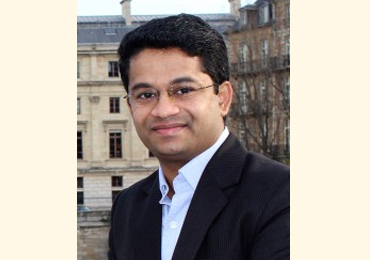
Jino GEORGE
Dr. Jino George is currently the assistant professor at IISER Mohali. His research is focused on molecular strong coupling.They are aiming to understand the chemical and physical properties of hybrid light-matter states, which are otherwise called as polaritonic states.
View Profile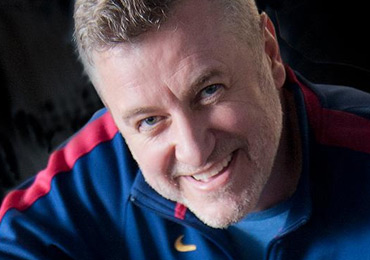
Claudiu GRADINARU
Dr. Claudiu Gradinaru is a professor in chemistry at the University of Toronto. Gradinaru biophysics research laboratory uses advanced laser and detection technology to capture conformational dynamics and molecular interactions at the single-molecule level. Single-molecule techniques are widely applied in life sciences and nanotechnology due to their unique ability to go beyond the intrinsic disorder and complexity of biological systems and provide new insights for how they work and for therapeutic intervention. Ultrasensitive microscopes in our lab, designed and built specifically for single-molecule fluorescence imaging and spectroscopy, provide a wide range of photon-level experimental capabilities, making the lab unique in Canada.
View Profile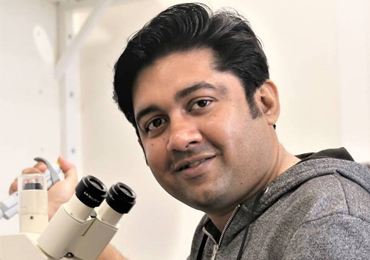
Shubhasis HALDAR
Dr. Shubhasis Haldar is an assistant professor in Biology at Ashoka university. His research work focused on interface of physics, chemistry, and biology-aiming to understand complex biological phenomenon, starting from force sensor proteins to chaperone biology.Furthermore, they have developing novel single molecule methodology to understand the unanswered questions in chaperone biology.
View Profile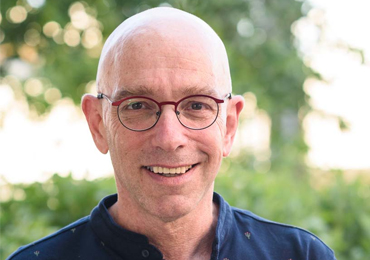
Gilad HARAN
Prof. Gilad Haran is a faculty at Weizmann Institute of Science. Their research involves the application of cutting-edge spectroscopic methods on the single-molecule level, including fluorescence and Raman scattering, to study molecular dynamics. They are also interested in a diverse set of problems, from protein folding to surface plasmon excitations at metal surfaces.
View Profile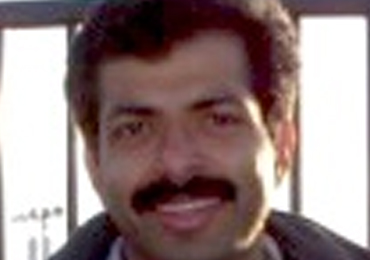
Mahesh HARIHARAN
Dr. Mahesh Hariharan is a faculty in department of chemistry, IISER Thiruvananthapuram. His research group focuses on various aspects of Physical Organic Chemistry and Biophysical Chemistry to understand the effect of light on organic small molecules and biomolecules. Synthetic efforts to modulate the rate of charge recombination that is monitored using ultrafast spectroscopic techniques is one of the primary interests in his group at IISER Thiruvananthapuram.
View Profile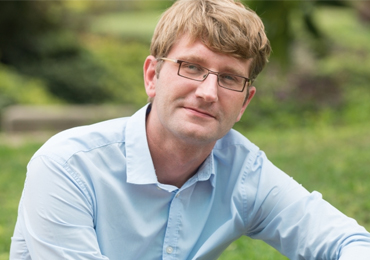
Hagen HOFMANN
Dr. Hagen Hofmann is a faculty in department of chemistry and structural biology, at Weizmann institute of science. His research focusses on broad set of single-molecule fluorescence tools to understand the dynamics of proteins and protein networks on timescales from nanoseconds to hours. In addition, we use live-cell imaging, in vivo single-molecule FRET, and single particle tracking to monitor proteins in live cells.
View Profile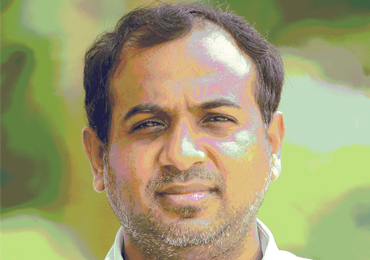
Mahendran K. R.
Dr. Mahendran K. R. is a scientist at RGCB Thiruvananthapuram. His laboratory focusses on the molecular transport across porins of grampositive bacteria (mycolata) specifically through hetero-oligomeric pores from Nocardia farcinica with integration of different disciplines.
View Profile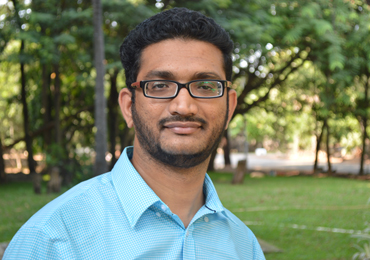
Hema Chandra KOTAMARTHI
Dr. Hema Chandra Kotamarthi is a faculty Indian Institute of Technology Madras. His research interest lies in understanding the physicochemical properties of Biomolecules, in particular proteins and enzymes.His group using single-molecule force spectroscopy, biochemical techniques in understanding processes of protein folding/unfolding and degradation.
View Profile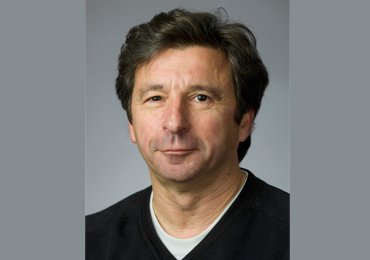
Oleg KRICHEVSKY
Dr. Oleg Krichevsky is a faculty in department of physics at Ben-Gurion University of the Negev. His research highlights on Internal dynamics of biological polymers: DNA molecules, actin filaments. There are of interests are analyzing the interactions and physical properties of biological molecules usingadvanced optical and molecular biology techniques.
View Profile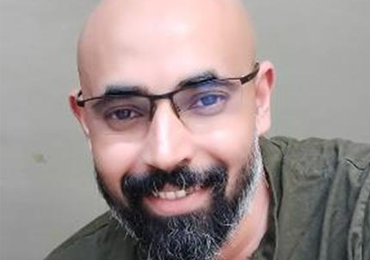
G. V. Pavan KUMAR
Dr. G. V. Pavan Kumar is a faculty at IISER Pune. He is broadly interested in research questions that are at the interface of nanophotonics and soft-matter physics.
Specifically, to address questions such as:
1. how do optical/optothermal forces behave at micro- and nano-scales?
2. how do optical/optothermal forces interact with single molecules and soft (nano)matter: colloids, liquid crystals, droplets, bubbles etc.?
3. what can we learn about the structure and dynamics of molecules and soft matter using optical/optothermal forces?
4. what are the technological and biological implications of optical/optothermal force-soft matter interaction?
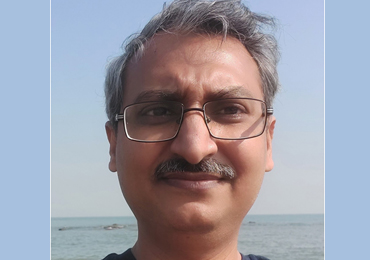
Manoj KUMBHAKAR
Dr. Manoj Kumbhakar is a faculty in radiation and photochemistry division at BARC. His research interests are to monitor the mechanism as well as kinetics of various chemical reactions from spectroscopic variations, using single molecule and ensemble spectroscopic techniques.
View Profile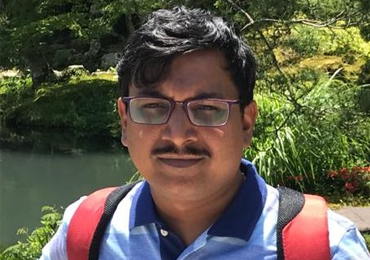
Adithya LAKSHMANNA
Dr. Adithya Lakshmanna is currently an assistant professor at School of Chemistry IISER Thiruvananthapuram. His research focuses on unravelling the intricate structural dynamics associated with excited state electron and proton transfer processes using ultrafast coherent Raman and IR spectroscopic methodologies.
View Profile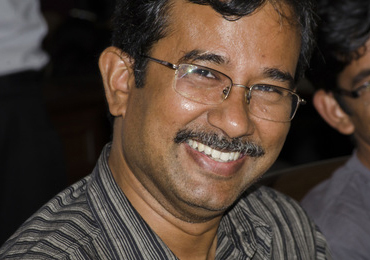
Sudipta MAITI
Prof. Sudipta Maiti, currently the professor and chair at Department of chemical science, TIFR Mumbai. His research group is trying to address various problems of protein aggregation/misfolding and neurotransmitter dynamics using various instrumentation on single molecule level.
View Profile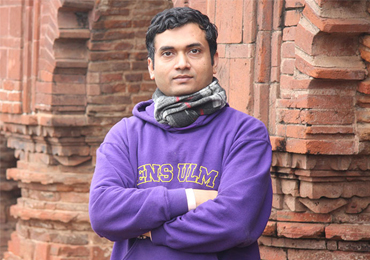
Prasun K. MANDAL
Dr. Prasun K. Mandal is currently the Professor in IISER Kolkata. His research includes Single molecule/particle spectroscopy-microscopy.Ultrafast-ultraslow dynamics (femto to milli-second), Live-cell and cell-organelle imaging, Semiconductor quantum dots, Perovskites, Fluorescent protein chromophores, Meta-fluorophores, Flexible crystals.
View Profile
Saptarshi MUKHERJEE
Dr. Saptarshi Mukherjee is an associate professor in department of chemistry at IISER Bhopal. His research areas include single molecule spectroscopy, confocal and total internal reflection microscopy imaging, ultrafast laser spectroscopy, fluorescence correlation spectroscopy, atomic force microscopy and bio-macromolecules (Proteins and Enzymes, DNA, Lipids, Polymers etc.).
View Profile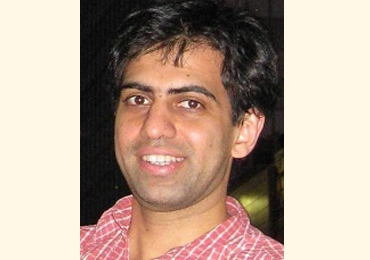
Tushar Kanti MUKHERJEE
Dr. Tushar Kanti Mukherjee is an associate professor in the discipline of chemistry at IIT Indore. His research group focuses on the optoelectronic and photophysical properties of semiconductors and metal nanoparticles. They ultimately aim to address various chemical and biological problems using these nanoparticles as fluorescence probe.
View Profile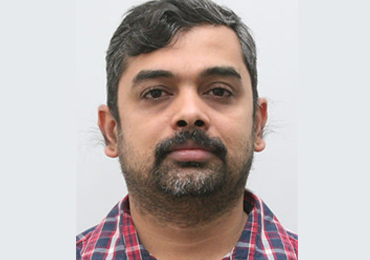
A. V. R. MURTHY
Dr. Murthy is working as an Assistant Professor at the Department of Applied Physics, Defence Institute of Advanced Technology, Pune, India. His broad research areas are Free Space Optical Communication, Optical instrumentation, Bio-photonics, Atomic Force microscopy and spectroscopy of biomimetic systems.
View Profile
Jayashree NAGESH
Dr. Jayashree Nagesh is a Ramanujan Faculty Fellow at the Solid State and Structural Chemistry Unit at the Indian Institute of Science, Bangalore. Her research group focuses on understanding light-induced vibronic process leading to photovoltaic applications and strategies to combat light-induced aggregation of biomolecules, utilizing first-principle based theories, mixed quantum-classical and quantum-classical and quantum mechanical-molecular mechanics algorithms.
View Profile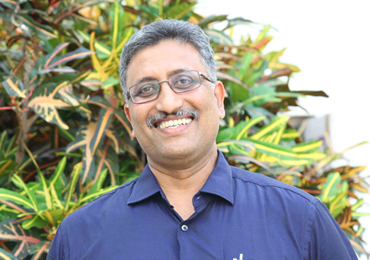
Chandrabhas NARAYANA
Professor Narayana specializes in Raman Spectroscopy. Though a trained condensed matter physicist, Prof. Narayana, developed a keen interest in Biology within a few years at JNCASR. His group is a pioneer in the use of Raman spectroscopy in a) drug-protein interaction, for drug screening applications and b) diagnostic applications.
View Profile
Shivprasad PATIL
Dr. Shivprasad Patil is an associate professor in department of physics, IISER pune. His research is mainly focusing on quantitative force measurements to study various aspects of molecular mobility, dynamics and mechanical response at single molecule scale with a goal to develop new methods with spatial resolution at molecular scale and time resolution of few tens of microseconds.
View Profile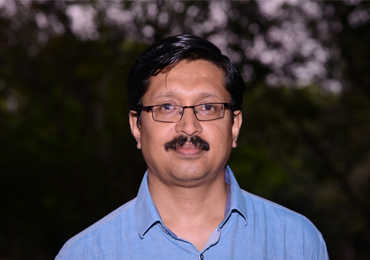
Edamana PRASAD
Dr. Edamana Prasad is a professor at the Department of Chemistry, Indian Institute of Technology Madras. He is also working as the Head of Teaching Learning Centre at IIT Madras where a group of faculty members from science and engineering departments, IIT Madras has been actively participating in organizing various activities for improving the teaching-learning process in the higher education sector of the country. His research interests mainly focusses on supramolecular self - assembly and photophysical aspects of small and assembled molecular systems.
View Profile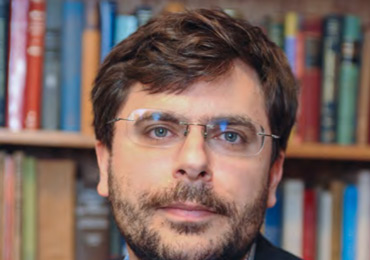
Steve PRESSE
Dr. Steve Presse is a faculty in School of Molecular Science at TEMPE Campus, Arizona state university. His lab now uses both theory and experiments to address fundamental questions relevant to molecular science. On the theory side, his group develops, adapts and uses the tools of inference, statistical physics and stochastic processes, broadly defined, to understand living systems from single molecules to whole cells. A special emphasis is placed on interpreting spectroscopy and imaging data. On the experimental side, Presse's group investigates the role of hydrodynamics on bacterial interactions.
View Profile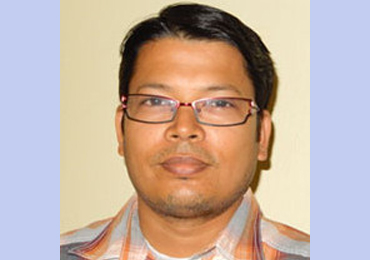
Sabyasachi RAKSHIT
Dr. Sabyasachi Rakshit is an associate professor at IISER Mohali. His research interests aim to understand the most well-developed living-sensor, 'hearing' and aspire to establish diagnostic tools to understand the health of human body by listening to ears. They utilize both experimental approaches using Atomic Force Microscope, single-molecule Forster Resonance Energy Transfer (FRET) using TIRF Microscope, Fluorescence Imaging, Live-cell imaging, Time-Resolved Emission Spectroscopy (TRES), Near-Field Scanning Optical Microscopy (NSOM) etc. as well as computational approaches like Molecular Dynamics and Steered Molecular Dynamics.
View Profile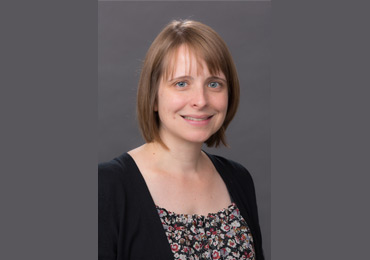
Elizabeth RHOADES
Dr. Elizabeth Rhoades is a professor in chemistryat the University of Pennsylvania. Research in the Rhoades lab aims to elucidate the principles that link protein conformational change with structure-function relationships, focusing on understanding structural plasticity in intrinsically disordered proteins (IDPs). IDPs do not form stable structures under physiological conditions; for many, function is dependent upon disorder. This is in striking contrast to the structure-function paradigm that dominates our understanding of globular proteins. Given the large fraction of the eukaryotic proteome predicted to be disordered, the scope of the problem and the need for new insights are enormous.
View Profile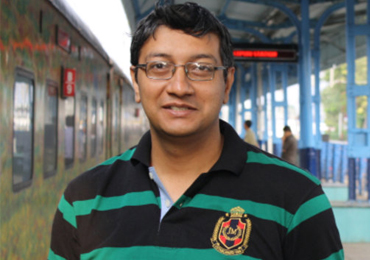
Basudev ROY
Dr. Basudev Roy is an assistant professor in the department of physics at IIT Madras. His research group primarily focusses on optical tweezersbased study of statistical mechanics and biological systems. They are interested in experimental soft matter physics, high resolution imaging and optical tweezers
View Profile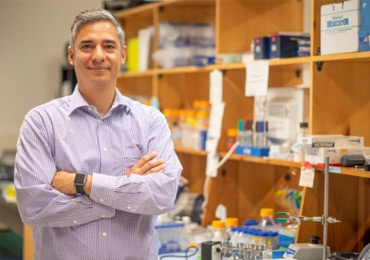
Hugo SANABRIA
Dr. Hugo Sanabria is an Associate Professor and Principal Investigator of the Single Molecule Biophysics Lab at Clemson University. He is an NSF CAREER and Alexander von Humboldt awardee. Skilled in Mathematical Modeling, Protein Chemistry, Spectroscopy, Fluorescence, and Biophysics. Strong education professional.
View Profile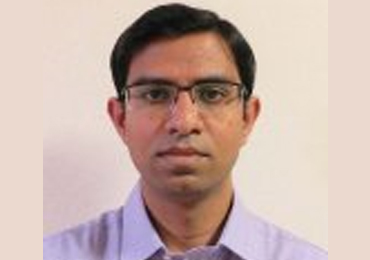
Bidyut SARKAR
Dr. Bidyut Sarkar is interested in the investigation of structural dynamics of biomolecules through novel single molecule spectroscopy.
View Profile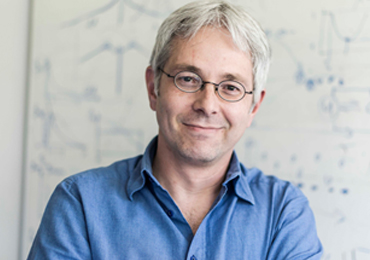
Ben SCHULER
Dr. Ben Schuler is Professor of Molecular Biophysics at the department of Biochemistry in University of Zurich. He investigates the structure, dynamics, folding and misfolding of proteins with a close combination of biochemical and spectroscopic methods, in particular single molecule fluorescence.
View Profile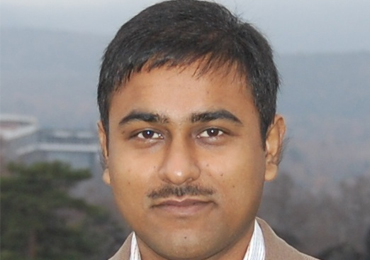
Pratik SEN
Prof. Pratik Sen is currently a professor in department of chemistry, IIT Kanpur. His prime research interests are femtosecond and picosecond ultrafast laser spectroscopy, nonlinear laser spectroscopy, protein stability, binary solvent mixtures.
View Profile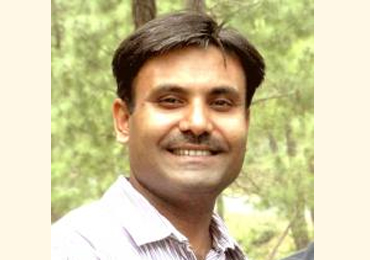
Sobhan SEN
Dr. Sobhan Sen is currently the associate professor at Jawaharlal Nehru University, New Delhi. His research involves molecular dynamic simulations, ultrafast and single molecule spectroscopy and biomolecular dynamics.
View Profile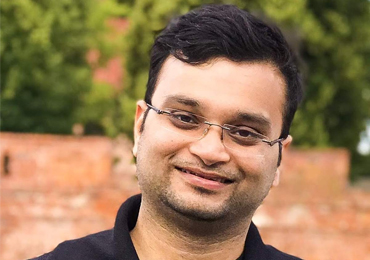
Soumik SIDDHANTA
Dr. Soumik Siddhanta is an assistant professor in chemistry at IIT Delhi. He hasresearch experience in Molecular spectroscopy (Raman, SERS, IR), Plasmonics, Material science, Microscopy/Imaging/Bio-analytical techniques, molecular modelling, Computational plasmonics, and Biophysics.
View Profile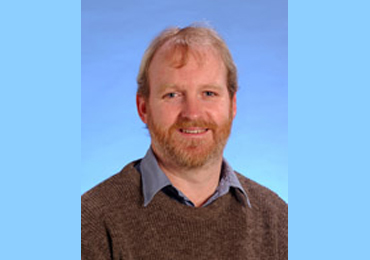
Trevor SMITH
Dr. Trevor Smith is a professor at the University of Melbourne.His research interests are in the broad area of photochemistry/photophysics specialising in ultrafast laser spectroscopy and optical microscopy applied to systems including organic and other photovoltaic materials.
View Profile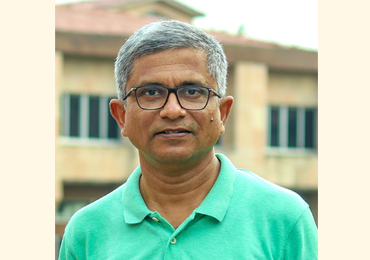
Rajaram SWAMINATHAN
Prof. Rajaram Swaminathan is a working at IIT Guhawati. Biophotonics, Fluorescence Spectroscopy, Protein Charge Transfer Spectra, Protein Aggregation, Intrinsically Disordered Proteins, Influence of Macromolecular Crowding on enzymatic reaction rates & equilibria and Big Data analysis of the Proteomes are his field of interest.
View Profile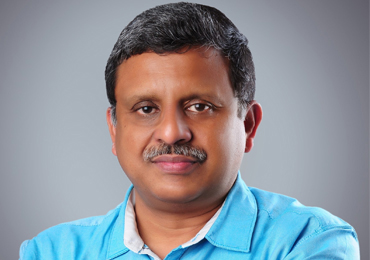
K. George THOMAS
Dr. George Thomas is a professor and J C Bose National Fellow at the School of Chemistry of the Indian Institute of Science Education and Research Thiruvananthapuram. His research includes Plasmonically-powered chemical systems, Photochemistry and Photophysics of semiconductor quantum dots and Chiroptical properties of nanostructures.
View Profile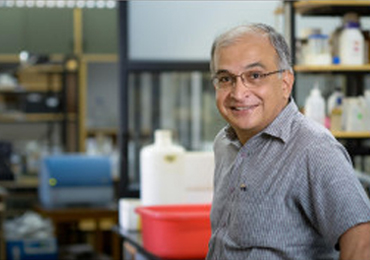
Jayant B UDGAONKAR
Prof. Jayant B. Udgaonkar is currently the professor in Biology at IISER Pune. His research areas include Self-organisation and cell morphogenesis, Lipid signalling pathways, Protein folding, Structure and function of molecular machines, Cell motility and bacterial cytoskeleton, Discovery and analysis of membrane-remodelling proteins, Origins and early evolution of life, Chemical Proteomics, Metabolomics/Lipidomics.
View Profile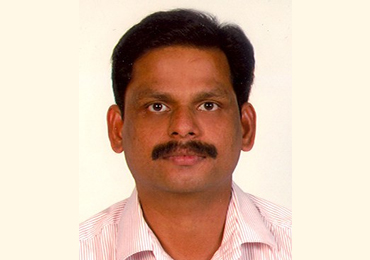
Reji VARGHESE
Dr. Reji Varghese is an associate professor in chemistry at IISER Thiruvananthapuram. His research areas include Organic Synthesis, DNA Nanotechnology, Supramolecular Chemistry, Bionanomaterials.
View Profile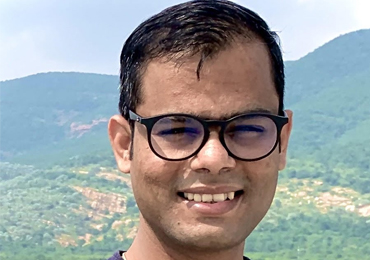
Sachin Dev VERMA
Dr. Sachin Dev Verma is an assistant professor in chemistry at IISER Bhopal. They are working at the interface of Chemistry and Physics. They are trying to develop and utilise optical spectroscopic and microscopic experimental tools, covering a dynamic range from femtoseconds to seconds, to understand exciting dynamic processes in energy nanomaterials and biomacromolecules.
View Profile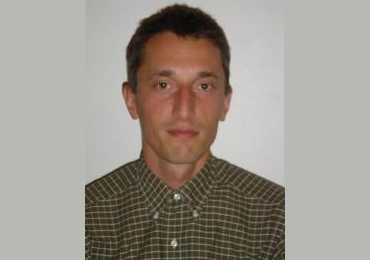
Jerker WIDENGREN
Dr. Jerker Widengren is a faculty in the department of applied physics at KTH royal institute of technology. They focus on ultrasensitive and ultrahigh resolution fluorescence spectroscopy and imaging, where the possibility to detect, identify and characterize biomolecules and biomolecular interactions down to a single molecule level opens exciting perspectives in diagnostics, screening methodologies, and for fundamental dynamic and conformational studies of biomolecules.
View Profile